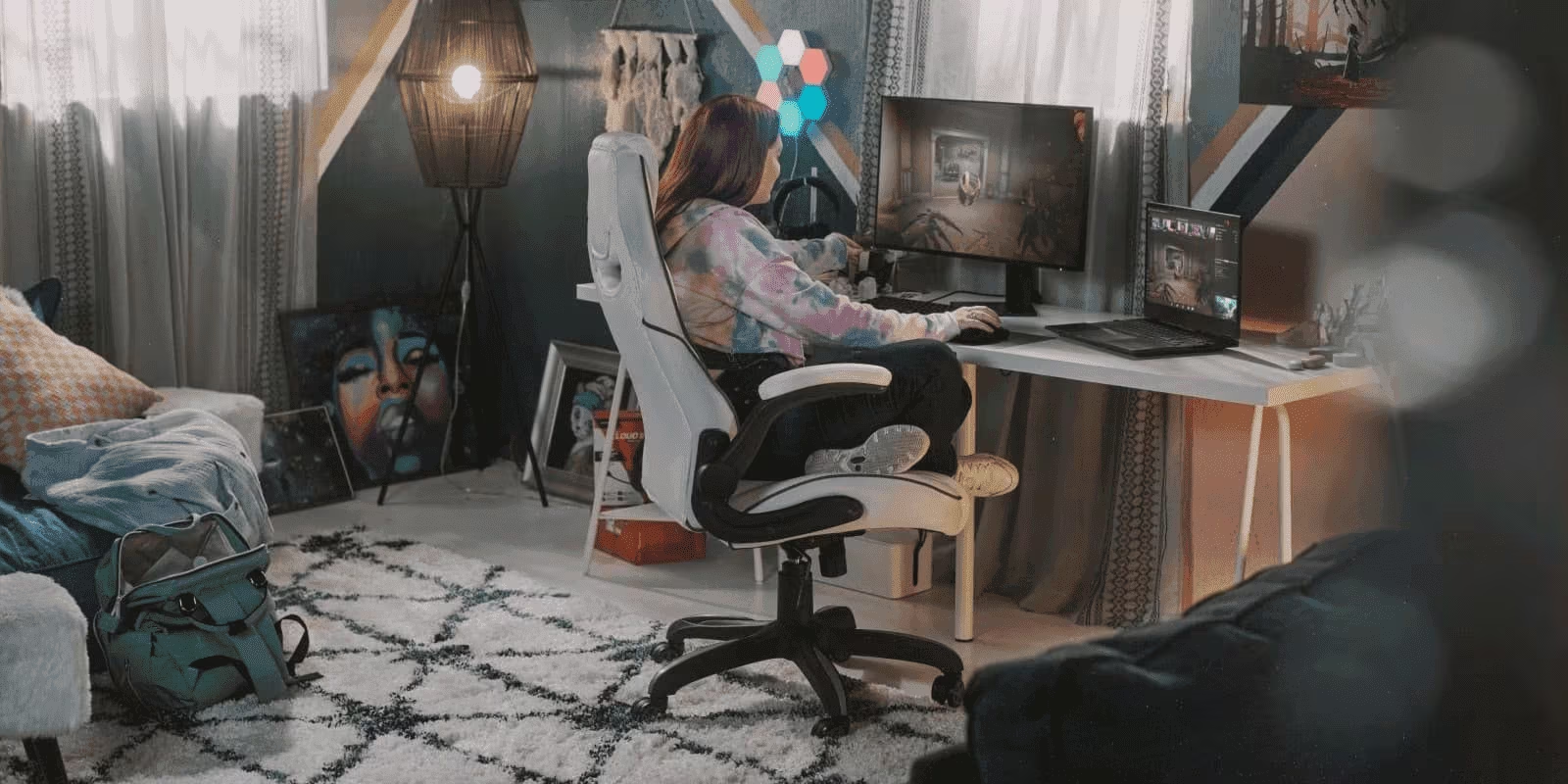Thank you for visiting the INDIA HP Store
-
Contact Us
CONTACT USCall us
- Home customers
- 1800 108 4747
- Business customers
- 1800 108 4746
- Technical support
- 1800 258 7170
Mon-Sat 9.00am - 7.00pm
(exc. Public Holidays)
Chat with us- Sales
- 18335950700 (WhatsApp)
-

Mon-Sat 9.00am - 7.00pm
(exc. Public Holidays)
Live product demo
HP World Locate our stores - Location
- My Account
How to Use CDs and DVDs on a Computer with No Disk Drive


When was the last time you needed to play a CD or DVD on your computer? While you may not have to do this as often as you once did, it’s also the only way to access certain games, albums, or movies. If the media isn’t available digitally, a disk is your best option. Alternatively, you may have backed up some of your files to a disk at some point and need to access them again.
If your computer has an internal optical drive, then you have nothing to worry about – but what do you do if it doesn't have one? In this guide, we’ll give you the facts on how to play a DVD or CD on a desktop PC or laptop with no disk drive.
What happened to disk drives?
Nearly all modern PCs lack disk drives. This is especially true for laptops, which have to make the best use of their space to deliver a truly portable computing experience. Computer manufacturers started to move away from internal drives for a number of reasons, including the fact that people began to access media in other ways, such as downloads and digital streaming.
Plus, with external and cloud storage options becoming more affordable, it may not make sense for you to buy a computer with an optical drive for the sole purpose of creating backup files.
How to play DVDs on a laptop without a DVD drive
You have a disk you’re ready to play, but your laptop has no DVD drive. Now what? The following options can get you access to your media quickly and affordably. Here are a couple of solutions for how to play a DVD on a laptop without a disk drive. These tips work for desktop PCs, too.
1. USE AN EXTERNAL DVD DRIVE
External drives are affordable and plug-and-play ready. Simply connect one to your computer through an available USB slot, wait for the installer to finish, and you’re ready to go.
However, be sure to check the specs of any drive to see the types of media it plays. Some older external drive models won't display Blu-ray content, for example. Others are read-only, which means you cannot use them to put content on blank disks, but you can play a CD or DVD.
If you’re in the market for an external drive, consider the following budget-friendly buys:
• HP External USB DVDRW Drive
• Buffalo MediaStation 16x Desktop BDXL Blu-Ray Writer
• Buffalo MediaStation 6x Portable BDXL Blu-Ray Writer
Check the compatibility of any drive for Windows or Apple devices, too. Of special note, some Chromebooks won’t work well with external drives.
2. CREATE ISO FILES FOR VIRTUAL DISKS
Looking for something new to play without spending a fortune? Learn more about the best free PC games to see why everyone is playing these top triple-A (AAA) titles.
Whoever said gaming is too expensive of a hobby to get into must be painfully unaware of the incredible selection of free downloadable games for your PC. Why blow hundreds of dollars on expensive AAA titles when you can enjoy plenty of great video games that won’t cost you a dime?
If you want to play a game on disk without the need for an external drive down the road, you can create ISO files that live on your desktop. Then, you can access them at any time without connecting to the external drive every time you want to play.
You'll still need the disk drive to view and access the files on your original game disk, but once you do access them, you can easily use third-party tools to create your ISO files. A couple to try:
• Anyburn
• Burnaware
• IMGBurn
The new ISO files allow you to play even those games that require you to insert the disk for validation, so you won’t need your external drive for that. Follow the directions for your choice of virtual disk software for full details on how to make this conversion.
3. RIP FILES FROM CD, DVD, OR BLU-RAY
While you’re using your external drive to create game files, consider “ripping” the data from your favorite disks for viewing or listening later. There are a number of software tools that make this easy, including Apple’s iTunes and Windows Media Player.
Just be aware that certain copyright protections may make it difficult to make a digital copy of a physical movie DVD and Blu-ray disk you own. Note: Use any third-party software that promises to help you bypass these legal obstacles at your own discretion.
You should have no issues importing any media you created yourself, such as home movies or digital photos, to your PC as digital files. Plus, your OS may even sort and tag files which will make them easier to find later.
4. SHARE CD AND DVD DRIVES OVER WINDOWS NETWORK
You’ll still need access to a computer with a physical drive or an external optical drive for this hack, but once you’ve secured one, the networking possibilities are pretty exciting.
With your disk in the optical drive of another computer on your network, you can use remote disk sharing permissions to see what’s on that disk from any connected computer that has been granted permissions.
For Mac OS users, the "remote disk sharing" is built right into the OS.
For Windows users:
• Right-click on the drive listing from the File Explorer window
• Select the user groups on the network you want to access
• Once assigned, other users can connect to the drive as long as they are included in the permitted user group
Access CDs and DVDs easily
The easiest way to view and access media disks of all types is through the external optical drive. External drives are affordable and you can use them between devices. A classroom or family can have just one external drive that they share for an affordable way to watch DVDs or listen to audio recordings across all their devices.
STORE FILES ON YOUR COMPUTER OR THE CLOUD


But what if you want to take your media with you on-the-go and don't want to take the external drive with you? Just use your external drive to retrieve data and files that you can then permanently store on your computer or in the cloud.
COMPRESS YOUR FILES
Remember that these original files can be large, so use a compressed file type that won't take up all of your PC's storage. Better yet, consider a file type that you can store and use from your mobile device. More and more users are taking their favorite flicks with them on their smartphones for offline watching that won't eat up their data plan.
Summary
Whether you’re a collector of classic PC games or you need to copy old photo files from a disk your mom gave you, it’s likely you’ll need to dust off and insert a disk at some point for use in your PC. With more laptops cutting out this feature altogether, and PC towers making them an optional add-on, it’s a simple hack worth knowing.
As media evolves, you’ll see fewer CDs, DVDs, and Blu-rays available, but knowing how to handle them is an essential skill for any smart consumer. That’s especially true for collectors and archivists who may want to access media that’s simply not available as a digital purchase.
- Home customers
- 1800 108 4747
- Business customers
- 1800 108 4746
- Technical support
- 1800 258 7170
Mon-Sat 9.00am - 7.00pm
(exc. Public Holidays)
- Sales
- 18335950700 (WhatsApp)
-

Mon-Sat 9.00am - 7.00pm
(exc. Public Holidays)
Live product demo








